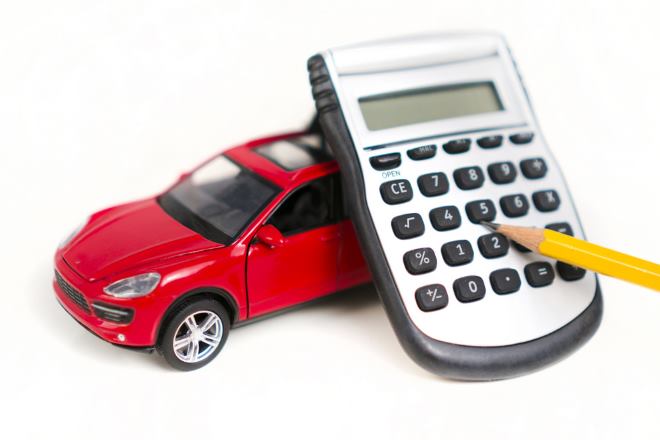Car Loan Essentials: Complete Guide to Vehicle Financing
Navigating car loans doesn't have to be intimidating. This guide breaks down how lenders set rates, what affects your APR, loan types available, and how down payments and term lengths affect monthly costs. Learn how to compare lenders, get pre-approved, and make a financing choice that saves you money over time.

Financing a vehicle is one of the biggest personal loans many people take on, so understanding how car loans work can help you avoid costly mistakes. This article walks through the factors that shape loan offers, explains interest and APR, outlines common loan types, and provides tips for choosing the right financing for your situation.
Key Factors Affecting Car Loan Terms
Several borrower and vehicle characteristics determine the interest rate and other terms you’ll be offered. Your credit score is often the most influential — higher scores typically unlock lower rates because lenders view you as lower risk. Lenders also consider your income stability and debt-to-income (DTI) ratio to ensure you can handle monthly payments.
The size of your down payment matters: a larger upfront payment reduces the financed amount and can improve the rate and monthly payment. The car itself is important as well; new cars usually qualify for better rates because they retain value longer and are less likely to have hidden problems. Used or older vehicles can carry higher rates because the lender’s collateral depreciates faster. In some cases, a cosigner can help borrowers with thin or poor credit access better terms.
Understanding Interest Rates and APR
A quoted interest rate is the periodic cost of borrowing, but the Annual Percentage Rate (APR) gives a fuller picture by including fees and other finance charges spread across the loan’s life. Comparing APRs between offers helps you evaluate the true cost of financing.
Rates vary widely based on market conditions and individual credit profiles. Typical APR ranges currently fall around 3% to 10% for new cars and 4% to 12% for used vehicles, though those numbers shift with lender policies and economic trends. Shorter loan terms tend to have lower rates but higher monthly payments; longer terms reduce monthly payments but increase the total interest paid.
Common Car Loan Types and Options
- Banks and credit unions: Traditional lenders often provide some of the most competitive rates, especially credit unions, which are member-owned and may offer lower APRs.
- Dealer financing: Dealerships can arrange loans on-site and may offer promotional rates for new cars. While convenient, dealer financing can sometimes include higher rates or additional markups, so it’s wise to compare dealer offers with outside financing.
- Online lenders: Online banks and fintech firms can approve loans quickly and provide competitive offers, though some niche online lenders may charge higher rates for riskier borrowers.
- Captive finance companies: Automakers’ finance arms may run promotions for new-car purchases and leases, including low- or zero-percent deals for well-qualified buyers.
- Subprime or specialized loans: For buyers with poor credit, there are lenders that specialize in higher-risk auto loans, though these typically come with higher APRs and stricter terms.
Down Payments and Loan Terms
A common guideline is to aim for a down payment of around 20% of the vehicle’s purchase price. Putting more down reduces the loan-to-value (LTV) ratio, which lowers lender risk and often results in better rates and smaller monthly payments. A larger down payment also helps prevent being underwater on the loan (owing more than the car is worth) once depreciation is accounted for.
Loan lengths usually range from 36 to 72 months. While 84-month loans exist and can lower monthly payments, they increase the total interest paid and raise the chance of negative equity. Shorter terms cost less overall in interest and allow you to build equity faster, but they require higher monthly payments.
Current Car Loan Providers and Rates
| Lender Type | Typical APR Range (New Cars) | Minimum Credit Score |
|---|---|---|
| Banks | 3.5% - 7.5% | 660 |
| Credit Unions | 2.9% - 6.5% | 640 |
| Online Lenders | 3.9% - 8.9% | 600 |
| Dealership Finance | 4.5% - 9.5% | 620 |
Prices, rates, or cost estimates mentioned in this article are based on the latest available information but may change over time. Independent research is advised before making financial decisions.
Making an Informed Decision
Before you commit, comparison shopping is essential. Get pre-approved by a bank or credit union to establish your budget and strengthen your negotiating position at the dealership. When comparing offers, look at the APR, the total amount financed, monthly payment, term length, and any fees or penalties for early repayment.
Factor in total cost of ownership, not just the loan payment. Insurance, maintenance, fuel, registration, and potential repairs add up. Consider whether you need extras such as GAP insurance or extended warranties, and understand how those add-ons affect financing when rolled into the loan.
If your rate is high today and your credit improves later, refinancing is an option to reduce interest costs. Conversely, if you can afford higher monthly payments, opting for a shorter loan term can save substantial interest over the life of the loan.
Final Tips
Shop multiple lenders, read all loan documents carefully, and avoid financing add-ons you don’t need. Calculate the total cost of each offer using APR and total interest paid, not just monthly payment. Aim to make a solid down payment and choose the shortest term you can reasonably afford. With informed decisions and a clear comparison strategy, you can secure financing that fits your budget and long-term financial goals.






